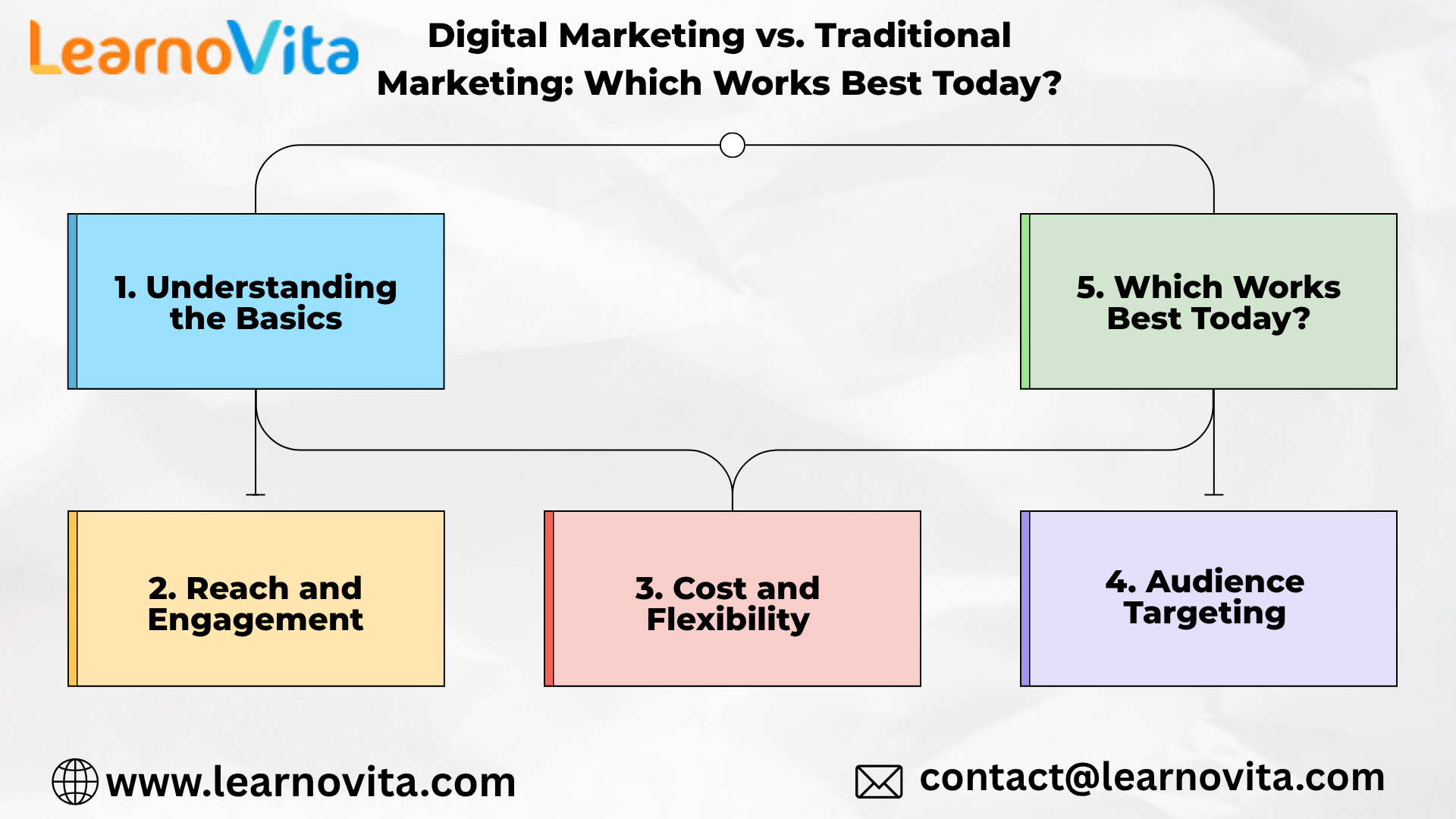Marketing Face-Off: Digital Innovation vs. Time-Tested Methods

Marketing has changed dramatically over the past decade. While traditional methods like TV commercials, print ads, and billboards are still around, digital marketing has transformed the way businesses reach and engage with audiences. But in today’s fast-paced world, which approach is more effective?
1. Traditional Marketing: Broad Reach and Credibility
Traditional marketing includes television and radio ads, newspapers, magazines, direct mail, and billboards. Its main advantage is reach a prime-time TV spot or a high-traffic billboard can expose your brand to thousands, even millions, of people at once. It’s also excellent for building credibility and trust with established audiences. However, traditional marketing has limitations. It can be expensive, measuring ROI is difficult, and campaigns aren’t easily adjustable once launched. For Digital Marketing Course in Bangalore businesses seeking flexibility and quick, measurable results, traditional methods alone may not be enough.
2. Digital Marketing: Targeted and Measurable
Digital marketing operates online through social media, email, websites, and search engines. Its strengths lie in precise targeting, personalization, and measurable results. Brands can track clicks, engagement, conversions, and audience behavior and adjust campaigns in real time for optimal performance. Digital campaigns are also cost-effective. They can start small, scale quickly, and reach audiences who are most likely to be interested in your products or services. Direct engagement through comments, shares, and clicks adds a layer of interaction that traditional marketing rarely achieves.

3. Reach vs. Engagement
Traditional marketing excels at mass visibility, helping brands build awareness quickly. However, it offers limited engagement. You can reach people, but understanding how they respond is challenging. Digital Marketing Online Course, in contrast, thrives on engagement. From social media posts to email campaigns and online ads, businesses can connect with audiences, spark conversations, and encourage immediate actions such as website visits, sign-ups, or purchases.
4. Which Works Best Today?
It depends on your goals. Traditional marketing works well for broad awareness and establishing credibility. Digital marketing excels in targeting, engagement, and ROI tracking. Many successful brands combine both: traditional methods to create visibility, and digital channels to drive interaction, leads, and conversions.
Conclusion
Modern marketing isn’t about choosing one over the other it’s about balance. Digital marketing offers precision, flexibility, and measurable results, while traditional marketing provides credibility and mass reach. Leveraging the strengths of both approaches allows businesses to reach wider audiences while creating meaningful connections. The most effective marketers know that combining traditional and digital strategies is the key to maximizing reach, engagement, and results in today’s competitive marketplace.
- Questions and Answers
- Opinion
- Motivational and Inspiring Story
- Technology
- Live and Let live
- Focus
- Geopolitics
- Military-Arms/Equipment
- Security
- Economy
- Beasts of Nations
- Machine Tools-The “Mother Industry”
- Art
- Causes
- Crafts
- Dance
- Drinks
- Film/Movie
- Fitness
- Food
- Games
- Gardening
- Health
- Home
- Literature
- Music
- Networking
- Other
- Party
- Religion
- Shopping
- Sports
- Theater
- Health and Wellness
- News
- Culture

